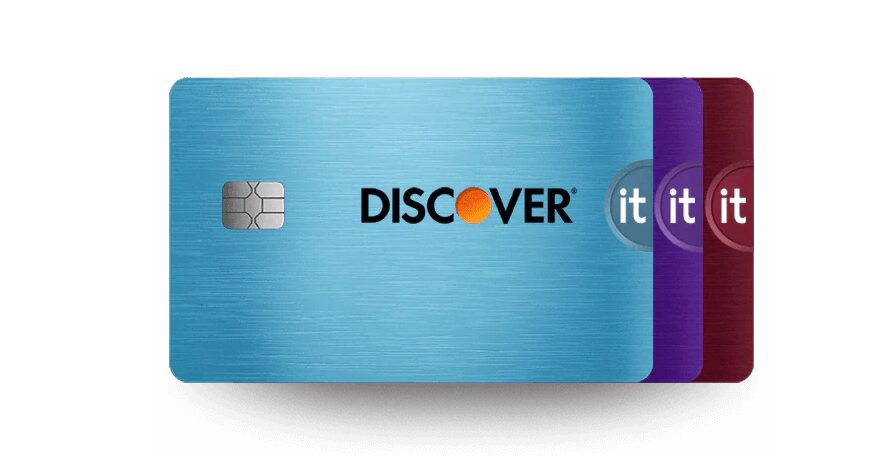The Evolution of Cybersecurity in Banking Transactions

Understanding the Historical Journey
In today’s digital world, cybersecurity has become a cornerstone of our financial interactions. The increasing reliance on online banking and mobile payment solutions underscores the need for robust protective measures. As technology advances, so does the sophistication of cyber threats, making it essential for both banks and customers to stay informed and vigilant.
The evolution of cybersecurity in banking transactions can be traced through several key milestones that highlight both the challenges and advancements over time. Each era brought forth unique vulnerabilities and responses, shaping the landscape of financial security as we know it today.
1970s – Foundations of Cybersecurity
In the 1970s, as computers began to play a crucial role in banking, early methods of cybersecurity were primitive by today’s standards. Simple password protections were the initial line of defense. However, these rudimentary safeguards often lacked the complexity necessary to prevent unauthorized access, making them vulnerable to hackers seeking sensitive information.
1990s – Encryption Emerges
The introduction of encryption in the 1990s marked a turning point. This technology allowed for the encoding of information, rendering it unreadable to anyone without the appropriate decryption key. The use of SSL (Secure Socket Layer) protocols during online transactions became paramount, ensuring that sensitive data shared between customers and banks remained secure.
2000s – Rise of Phishing
As the internet matured, so did the tactics of cybercriminals. The rise of phishing attacks in the early 2000s illustrated the dire need for enhanced security awareness among users. Scammers devised clever methods to mimic legitimate banks, tricking customers into divulging their personal and financial information. This prompted financial institutions to ramp up education efforts, encouraging customers to recognize the signs of fraudulent communications.
2010s – Multi-Factor Authentication
By the 2010s, banks began to implement multi-factor authentication (MFA) to counteract the escalating threat landscape. This extra layer of security typically requires users to provide two or more verification factors before gaining access to their accounts. For instance, a customer might receive a text message with a verification code that must be entered alongside their password, significantly reducing the risk of unauthorized access.
Present – AI and Machine Learning
Today, the integration of AI and machine learning technologies represents the forefront of cybersecurity efforts in banking. These advanced systems analyze vast amounts of transaction data in real-time to detect patterns and identify suspicious activities. For example, if a transaction is attempted from a new device or location, the system can flag this activity and prompt additional verification, preventing potential fraud before it occurs.
As we navigate this digital landscape, it is crucial to prioritize personal accountability. Being knowledgeable about the evolution of cybersecurity empowers us to make informed financial decisions. Simple actions, such as regularly updating passwords and scrutinizing bank statements, can significantly strengthen our defenses against cyber threats. By embracing cybersecurity consciousness, we not only protect our financial resources, but we also contribute to a collective effort to build a safer banking environment for everyone.
In unity, we can inspire change and promote a culture of security awareness. The journey of cybersecurity in banking underscores that both institutions and individuals play vital roles in safeguarding our financial future.
From Simple Measures to Complex Solutions
The journey of cybersecurity in banking transactions illustrates an evolving landscape where innovation meets the challenges presented by increasing cyber threats. As financial institutions transitioned from traditional banking methods to digital platforms, the need for enhanced security measures became paramount. This evolution reflects a growing awareness amongst both banks and customers regarding the importance of safeguarding sensitive information in an era where cybercrime is increasingly prevalent.
The 1980s – Rising Awareness
As the 1980s approached, digital banking began to gain traction, but many financial institutions were still unprepared for the implications of operating online. This decade saw a shift towards understanding the risks associated with increased computerization. Security protocols such as data encryption and secure access were developed, yet many institutions remained vulnerable due to the lack of comprehensive strategies to combat potential breaches. The introduction of regulations such as the Gramm-Leach-Bliley Act in 1999 began to emphasize the need for customer data protection, setting the stage for future advancements.
The 2000s – Increased Regulation and Standardization
With the dawn of the new millennium, fears of data breaches grew, prompting significant developments in regulatory compliance for banks. Legislation like the Payment Card Industry Data Security Standard (PCI DSS) emerged, mandating strict security measures for institutions handling credit card transactions. These regulations aimed to provide a framework for ensuring customer data was protected and raised the bar for security standards across the banking sector. Consequently, financial institutions were compelled to adopt a more proactive approach, investing in comprehensive security systems and staff training.
Consumer Education – Essential for Security
During the same period, there was an increasing realization that cybersecurity is a shared responsibility. Banks began to emphasize the importance of consumer education as a critical part of their security protocols. Customers needed to be aware of the risks and best practices, which included:
- Recognizing phishing attempts and suspicious communications
- Utilizing strong, unique passwords and regularly updating them
- Monitoring account activity for unauthorized transactions
Empowering customers with knowledge not only enhanced individual security but also fortified the banking system as a whole. Financial institutions started using educational campaigns, online resources, and interactive tools to engage customers and foster safer banking environments.
Moving Forward – A Collective Challenge
The trajectory of cybersecurity in banking transactions demonstrates that staying secure is an ongoing endeavor. As technology continues to evolve, so too do the tactics employed by cybercriminals. Today’s landscape demands that both institutions and customers work hand in hand—constantly adapting and evolving in response to new threats. It is not just about implementing the latest technology; it is also about fostering a culture of security where everyone contributes to protecting financial assets.
As we reflect on the transformative journey of cybersecurity in banking, we recognize the importance of collaboration. The financial sector and its customers must embrace responsibility, understanding that each individual’s actions can have a significant impact on overall security. Together, we can create a fortified environment where financial transactions can thrive safely and sanely.
The Technological Revolution – Innovations in Security
As we moved into the 2010s, the banking sector witnessed a technological revolution that fundamentally transformed cybersecurity measures. The advent of cloud computing, artificial intelligence (AI), and blockchain technology opened new frontiers in security capabilities. These innovations not only enhanced the ability to detect threats but also provided proactive strategies to combat cybercriminals.
Cloud Computing – Opportunities and Risks
With the widespread adoption of cloud services, banks found themselves embracing flexibility and scalability while facing new cybersecurity challenges. The shift to the cloud allowed for real-time data analysis and improved security protocols. However, it also raised concerns regarding data privacy and compliance with regulations such as the Gramm-Leach-Bliley Act and General Data Protection Regulation (GDPR). This duality pushed banks to adopt multi-layered security architectures that include advanced encryption technologies and secured access controls to safeguard customer data while leveraging the cloud’s capabilities.
Artificial Intelligence – A New Frontier
AI emerged as a game-changer in identifying and mitigating cyber threats. By employing machine learning algorithms, banks have been able to analyze enormous datasets to pinpoint suspicious behaviors. These predictive analytics enable real-time threat detection, allowing institutions to respond swiftly to potential breaches. A prominent example is the integration of chatbots that assist customers in navigating their accounts securely, while simultaneously monitoring for fraudulent activities. AI not only enhances operational efficiency but also plays a critical role in creating a safer banking environment.
Blockchain Technology – A Secure Foundation
As discussions around cryptocurrencies gained momentum, so too did the interest in blockchain technology as a method for improving security in banking transactions. Blockchain offers an immutable ledger that records all transactions, providing unparalleled transparency and traceability. This innovation can significantly reduce the risk of fraud while providing customers with greater control over their financial data. In the U.S., several banks are already exploring blockchain applications to facilitate secure transactions and enhance customer trust.
Cultivating a Culture of Vigilance
In this rapidly evolving landscape, it is essential for financial institutions to cultivate a culture of vigilance among their employees and customers. This includes ongoing training sessions that emphasize the importance of being aware of emerging threats and adhering to best practices. As cyber threats continue to grow in sophistication, the role of appropriately trained personnel becomes even more crucial. By establishing strong security protocols and fostering an environment of continuous learning, financial institutions can better prepare for the challenges that lie ahead.
Collaboration – The Key to Resilience
The evolution of cybersecurity in banking transactions highlights the necessity for collaboration among stakeholders, including banks, technology providers, and regulatory bodies. By sharing information about threats and vulnerabilities, these groups can work together to create a more resilient cybersecurity framework. Initiatives such as the Financial Services Information Sharing and Analysis Center (FS-ISAC) exemplify this collaborative spirit, providing a platform for timely sharing of intelligence on emerging threats and best practices.
As we look ahead, it becomes clear that the world of cybersecurity in banking transactions is an intricate web woven together by technology, human awareness, and collaborative effort. To navigate this dynamic environment, every participant must take a proactive stance, acknowledging that security is not just a responsibility—it’s a communal commitment to safeguarding the financial well-being of all. Together, we can build a foundation of trust and resilience that empowers our financial systems in the face of evolving threats.
Conclusion
In conclusion, the evolution of cybersecurity in banking transactions has been marked by remarkable advancements and significant challenges. As we have explored, the integration of cloud computing, artificial intelligence, and blockchain technology has revolutionized how banks protect their customers’ sensitive information. However, the responsibility of securing financial data does not rest solely on technology; it is a shared commitment that involves both institutions and individuals.
As cyber threats continue to evolve in complexity, it becomes imperative for both financial institutions and their customers to foster a culture of vigilance and resilience. This entails staying informed about potential risks and embracing best practices for safeguarding personal and financial data. Ongoing education, collaboration among stakeholders, and the adoption of advanced security measures create a robust defense against cybercriminals.
Moving forward, it is crucial to acknowledge that the landscape of cybersecurity is not static but a dynamic environment that demands continual adaptation and proactive measures. By embracing this mindset and actively participating in mutual efforts, individuals can contribute to a safer banking experience. Together, we have the power to cultivate a secure atmosphere that fortifies our financial systems against future threats, ensuring peace of mind for all. Let us take responsibility for our financial security and work collectively towards a bright, secure future in banking.
Related posts:
The Challenges of Financial Planning for Baby Boomers in the United States
The Role of AI-Based Investment Platforms in Financial Decision Making
Financial Planning for Brazilians Living in the USA
The Future of Digital Payments: Trends and Innovations in the USA
Blockchain and Its Application in Financial Asset Management
How to open a digital bank account in the USA without bureaucracy

Beatriz Johnson is a seasoned financial analyst and writer with a passion for simplifying the complexities of economics and finance. With over a decade of experience in the industry, she specializes in topics like personal finance, investment strategies, and global economic trends. Through her work on Web Dinheiro, Beatriz empowers readers to make informed financial decisions and stay ahead in the ever-changing economic landscape.






